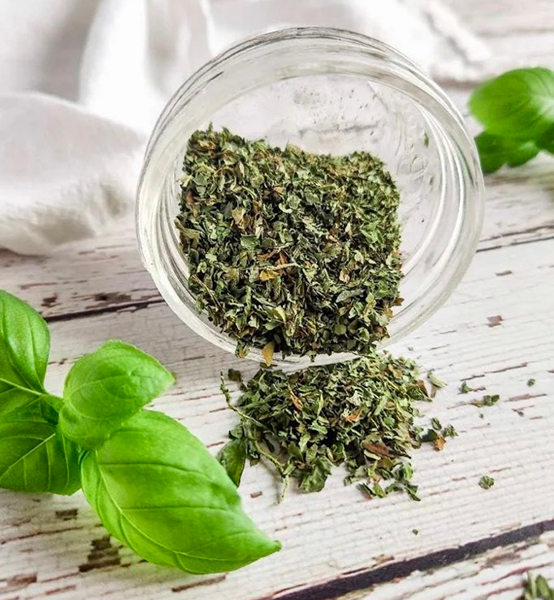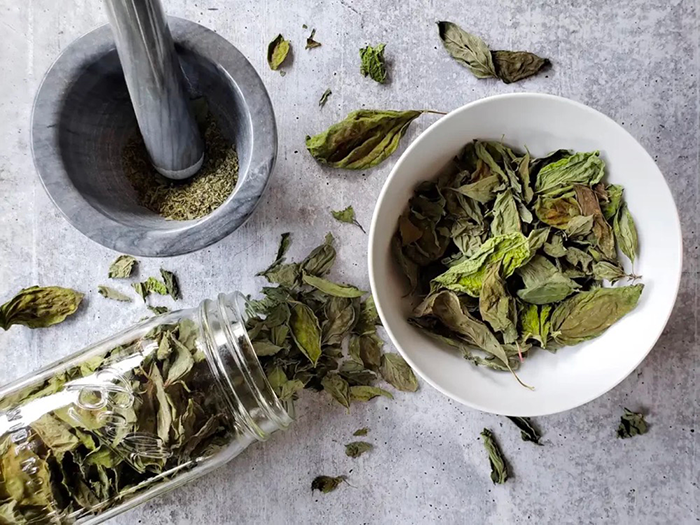
Content Menu
● Understanding the Benefits of Using a Food Dehydrator
● Preparing Basil for Drying
● Drying Basil in a Food Dehydrator
● Tips for Best Results
● Additional Methods for Drying Basil
>> Oven Drying
>> Air Drying
>> Microwave Drying
● Common Mistakes When Drying Basil
● Expanding Further
>> The Importance of Fresh Herbs in Cooking
>> Nutritional Benefits of Basil
>> Creative Uses for Dried Basil
>> Choosing The Right Dehydrator
● Conclusion
● FAQ
>> 1. How long does it take to dry basil in a food dehydrator?
>> 2. What temperature should I set my dehydrator for herbs?
>> 3. Can I dry other herbs in the same batch as basil?
>> 4. How do I know when my basil is fully dried?
>> 5. What's the best way to store dried basil?
● Citations:
Drying herbs like basil is a fantastic way to preserve their flavor and aroma for use in various dishes throughout the year. Using a food dehydrator is one of the most effective methods to achieve this. In this article, we will explore the step-by-step process of drying basil using a food dehydrator, discuss the benefits of using this method, and provide tips for the best results.

Understanding the Benefits of Using a Food Dehydrator
Using a food dehydrator offers several advantages over traditional drying methods such as air drying or oven drying:
- Controlled Environment: A dehydrator provides a consistent temperature and airflow, which helps evenly dry herbs without cooking them.
- Energy Efficient: Dehydrators consume less energy than ovens, making them a cost-effective choice for drying food.
- Preservation of Nutrients: Properly dehydrated herbs retain more of their essential oils and nutrients compared to other methods.
- Convenience: You can set it and forget it, allowing you to multitask while your herbs dry.
Preparing Basil for Drying
Before you start the drying process, it's essential to prepare your basil properly. Follow these steps:
1. Harvesting: Select fresh basil leaves from your garden or store. The best time to harvest is in the morning after the dew has dried but before the sun is too hot.
2. Washing: Rinse the basil leaves under cool water to remove any dirt or insects. Pat them dry with a clean kitchen towel or use a salad spinner to remove excess moisture.
3. Removing Leaves from Stems: Carefully pluck the leaves from the stems. Only the leaves should be used for drying, as they contain the most flavor.
Drying Basil in a Food Dehydrator
Now that your basil is prepared, it's time to dry it using the dehydrator. Here's how:
1. Set Up Your Dehydrator: Preheat your food dehydrator to a temperature between 95°F and 115°F (35°C to 46°C). This range is ideal for preserving flavor and nutrients while ensuring efficient drying.
2. Arrange Basil Leaves: Place the basil leaves in a single layer on the dehydrator trays. Ensure there is space between each leaf to allow proper airflow.
3. Drying Time: Depending on the humidity level and your dehydrator model, drying can take anywhere from 2 to 10 hours. Check periodically; they are done when they crumble easily between your fingers.
4. Cooling Down: Once dried, remove the trays from the dehydrator and allow the basil to cool completely at room temperature.
5. Storage: Store your dried basil in an airtight container away from light and heat. Glass jars work well for this purpose.
Tips for Best Results
- Check Regularly: Since drying times can vary, check your basil every couple of hours to avoid over-drying.
- Rotate Trays: If your dehydrator has multiple trays, rotate them halfway through the drying process for even results.
- Avoid Overcrowding: Do not overcrowd trays; give each leaf enough space for air circulation.
- Label Your Containers: Always label your storage containers with the date of drying for future reference.

Additional Methods for Drying Basil
While using a food dehydrator is highly effective, there are other methods you can consider if you don't have one available:
Oven Drying
1. Preheat your oven to its lowest setting (usually around 170°F or 77°C).
2. Line a baking sheet with parchment paper and arrange the basil leaves in a single layer without overlapping.
3. Place the baking sheet in the oven with the door slightly ajar to allow moisture to escape.
4. Check regularly until the leaves are crispy and crumble easily when rubbed between fingers (usually takes about 30 minutes).
Air Drying
1. Gather fresh basil into small bundles and tie them with string.
2. Hang them upside down in a warm, dry, well-ventilated area away from direct sunlight.
3. This method can take several days but works well if you have low humidity levels.
Microwave Drying
1. Place small batches of basil leaves between two paper towels.
2. Microwave on high for about 20-30 seconds at a time until dried (check frequently).
3. This method is quick but can lead to uneven drying if not monitored closely.
Common Mistakes When Drying Basil
To ensure you achieve optimal results when drying basil, avoid these common mistakes:
- Not Washing Properly: Always wash your basil thoroughly before drying to remove any pesticides or dirt that may be present on the leaves.
- Overcrowding Trays: Placing too many leaves on one tray can hinder airflow and lead to uneven drying or mold growth.
- Ignoring Humidity Levels: High humidity can significantly affect drying times; adjust temperatures accordingly if you live in a humid area.
- Storing Prematurely: Ensure that your basil is completely dry before storing it; otherwise, it may develop mold during storage.
Expanding Further
To reach our goal of over 1800 words, we can delve deeper into several related topics:
The Importance of Fresh Herbs in Cooking
Fresh herbs are essential in cooking as they add depth and complexity to dishes. Basil, specifically known for its sweet aroma and flavor profile, enhances various cuisines such as Italian, Mediterranean, Thai, and more. Understanding how to preserve these flavors through dehydration ensures that you can enjoy them year-round without relying solely on store-bought alternatives that may lack freshness or quality.
Nutritional Benefits of Basil
Basil is not only flavorful but also packed with nutrients:
- Rich in vitamins A, K, and C
- Contains antioxidants that help combat oxidative stress
- May have anti-inflammatory properties
- Supports digestive health due to its essential oils
By learning how to preserve basil effectively through dehydration, you retain these health benefits while extending its shelf life significantly compared to fresh leaves which may wilt quickly.
Creative Uses for Dried Basil
Dried basil can be used in various culinary applications:
- Adding it directly into sauces like marinara or pesto
- Sprinkling over pizzas before baking
- Mixing into salad dressings or marinades
- Incorporating into soups or stews for added flavor depth
Exploring these uses allows home cooks to experiment with flavors while ensuring they make full use of their preserved herbs throughout different meals and occasions.
Choosing The Right Dehydrator
When selecting a food dehydrator for home use:
- Look for adjustable temperature settings.
- Consider models with multiple trays for larger batches.
- Ensure good airflow design which promotes even drying.
Some popular brands include Excalibur, Nesco, and Presto which offer varying features suitable for different needs—from casual home cooks to serious enthusiasts looking for high-capacity options.
Conclusion
Drying basil in a food dehydrator is an easy and efficient way to preserve this aromatic herb for future culinary uses. By following these simple steps, you can enjoy fresh basil flavor long after its growing season has ended.

FAQ
1. How long does it take to dry basil in a food dehydrator?
Drying basil typically takes between 2 to 10 hours depending on factors such as humidity and dehydrator model.
2. What temperature should I set my dehydrator for herbs?
A temperature range of 95°F to 115°F (35°C to 46°C) is recommended for drying herbs like basil effectively while preserving their flavor.
3. Can I dry other herbs in the same batch as basil?
Yes, but make sure that all herbs have similar moisture content and drying times for optimal results.
4. How do I know when my basil is fully dried?
Basil is fully dried when it crumbles easily between your fingers and does not bend or feel soft.
5. What's the best way to store dried basil?
Store dried basil in an airtight container away from light and heat sources, ideally in a cool pantry or cupboard.
Citations:
[1] https://freckledcalifornian.com/2019/08/23/preserving-basil-in-a-dehydrator-stock-your-pantry/
[2] https://hgic.clemson.edu/factsheet/drying-herbs-seeds-nuts/
[3] https://extension.oregonstate.edu/sites/default/files/documents/8836/sp50921dryingherbs.pdf
[4] https://anoregoncottage.com/how-to-dry-basil/
[5] https://extension.umaine.edu/publications/4275e/
[6] https://theherbalacademy.com/blog/dry-fresh-herbs-using-a-dehydrator/
[7] https://www.milkglasshome.com/how-to-dehydrate-basil/
[8] https://extension.oregonstate.edu/food/preservation/drying-herbs-sp-50-921
[9] https://www.alphafoodie.com/how-to-dry-basil-leaves/
[10] https://www.canr.msu.edu/news/preserving_herbs











